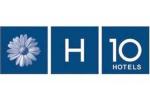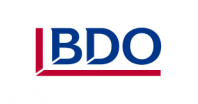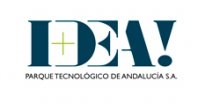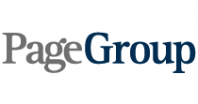Noticias de la Cámara
Latest on heating, cooling and renewable energy systems in Spain | Eco Vida Homes
21/09/2022
This is a hot topic because energy prices are rising, climate change is an increasing threat, people want to lower their carbon footprint, legislation is becoming tighter, and the market is demanding more comfortable homes.
Here is a quick summary of what we are advising our clients to use in standard situations. We find each client has a different set of priorities, amongst them cost, and we always do what our clients ask.
Bear in mind that with Eco Vida Homes, it is taken as given that your home is carefully orientated and well insulated with an energy-efficient design.
What I am focusing on in this article is the mechanical and engineering.
Renewable energy
We advise photovoltaic panels, either on the grounds or on the roof – and as many as you can afford. These provide you with electricity that you store in a home battery, such as a Tesla Powerwall or similar system.
In addition to your home battery, you might have an electric car that also has a substantial battery. Most of our clients are also on-grid, so they will be topping up their two batteries from their PV panels if necessary when the grid electricity is low tariff.
They may also be selling electricity back to the grid, although in Spain there are limits to how this operates (it’s not exactly lucrative!)
Solar hot water
We are no longer installing solar hot water in new builds (although they are a useful option in renovations). This is because in this hot country, what you need most of all is electricity for air conditioning. This is especially true in the hot summer months. There is enough solar-generated electricity in the winter for your hot water anyway. In the summer, you can have a beautifully cool home using free energy from the sun.
All modern conveniences
Forget the idea that the lights will be dim and you can only cook on gas. You can have all mod cons, electric ovens, microwaves, dishwashers, washing machines, tumble driers, all the hot water you need and even a heated pool.
Most of our clients are on-grid, so when the house is full at Christmas, the turkey gets roasted and everyone can have a hot shower even if it’s not sunny. Whether you cook on gas or not is a personal choice not driven by whether or not you have enough electricity.
Passive House
Passive house is a growing movement. Two of our architects, Domingo Cardenas and Alba Jimenez, are both qualified passive house designers. The movement grew out of Germany, where the Passive House Institute issues certificates for houses that meet certain criteria. In brief, passive houses are highly insulated, airtight, and use a mechanical ventilation system to maintain the air quality. Their influence on the building design industry is profound, with many of its design features even being incorporated into buildings for which the developer neither pursues the certificate itself nor the exacting standards required by the Passive House Institute. For example, all Eco Vida Homes designs incorporate extra insulation and most feature a mechanical ventilation system on the instructions of our clients.
The word “passive” in the context of building design is used to talk about non-mechanical ways of making your building energy efficient. For example, earth tubes running under the house to provide cool air to cool the house is passive, whereas electric generated air conditioning units might be considered non-passive or active. If your electricity is produced on-site using photovoltaic panels, your building can be full of mod-cons and be carbon zero.
In Spain, many of our clients in coastal areas where the climate is mild prioritise creating an integrated inside/outside space over qualifying for the passive house certificate. This space might be shaded, close to the kitchen of the outside kitchen in front of the view and next to the pool. In their opinion, as this space will be opened up for most of the year, it’s less important to have an airtight building. For those couple of months a year when it’s either too hot or too cold to have the space opened up, the climate is still mild and the house is warm enough or cold enough anyway without needing to go for the certificate.
Inland and in Madrid where it can be very cold in the winter and very hot in the summer it may be different. Under these circumstances, we find our clients are more interested in the passive house certificate.
Cost
A good domestic system for, say, a 250 sq m villa, might cost in the region of 25,000€ fully installed. The cost of PV panels is falling and this number could now be high. We are about to cost and install two systems so call us for an up to date broad cost.
This will take most of the pain out of your electricity bills and if you compare the net present value of all the costs of the system, including replacing it in 20 years, with the net present value of the costs of electricity over the same period, you’ll find it’s cheaper to install the system (although there is an initial monetary investment).
The payback period is in the region of 7 years, although as electricity prices rise the payback period falls.
Heating
The most comfortable heating system, in our opinion, is underfloor. It heats the floors and walls of the house, not just the air, and it’s a far more comfortable radiant feeling (like the heat from the sun). If you just heat the air, it’s more of a temporary heat and it doesn’t feel as nice.
While the climate in the winter in Spain is mild on the coast, there are a few months when heating is needed and it’s certainly needed inland.
Cooling
While underfloor cooling is a possibility, there are a number of problems. One is the danger of condensation and a wet floor. This can be overcome by having a dehumidifier (or conventional air conditioning) cut in before the air reaches the dew point. The other problem is cold feet.
On balance, we advise on conventional air conditioning through ducting concealed behind false ceilings and powered by an air source heat pump.
Air source heat pump
This can sound more complicated than it is. If you have a fridge or an air conditioning system, you’re already using an air source heat pump. It essentially uses the differential in the air temperature to magnify the electrical power.
Depending on the size of your house and requirements, you might want one big one or two little ones. Two little ones might be more efficient and more flexible. For example, if you had a house that on certain days in the springs needs a bit of cooling in the rooms on the south-facing façade and a bit of heating in the rooms on the north-facing façade, then you might opt for two small ones.
The best brand of heat pumps is probably Daikin. Midea is a little less expensive but probably does the same job (at least on paper).
Mechanical ventilation
This system very slowly and very quietly extracts dirty air from the kitchen and bathroom, as well as introducing clean air into the living spaces so there is a continuous, low level of fresh air in the home. It’s very healthy. The air you breathe is always clean and fresh. In addition, there is condensation or damp in the house.
It’s compulsory under the Spanish building regulations (although this is often ignored and is not policed at the moment). When used in conjunction with a heat exchanger, that is to say, a mechanism that exchanges the heat of the air being expelled with the heat of the air being introduced, then it’s very energy efficient. The heat exchanger can work to 99% efficiency. This is a feature of a passive house.
Home automation
In Spain, we talk about the domotic system. It’s basically the control system. So for example, you might want a separate temperature control in every room. The lighting and the shutters can automatically adjust during the day or you can have a number of pre-set settings (watching TV mode, party mode, cleaning mode, etc.) You can integrate the audio in every room with an alarm system and the front doorbell. The home can be accessible only to those with a passcode: tenants, guests, cleaners, gardeners…
You might want to control the heating and cooling at a distance from your phone, for example, so the house is primed at the right temperature for your arrival. You might want a “leave the house button”, which automatically closes and locks all the shutters, turns off all the lights and the standbys (but leaves on the fridge and the freezer), and turns on the alarm. Similarly, you might want a “night-time” mode activated from your bed. Loxone have provided several of our domotic systems.
You can read the article here.













































































































